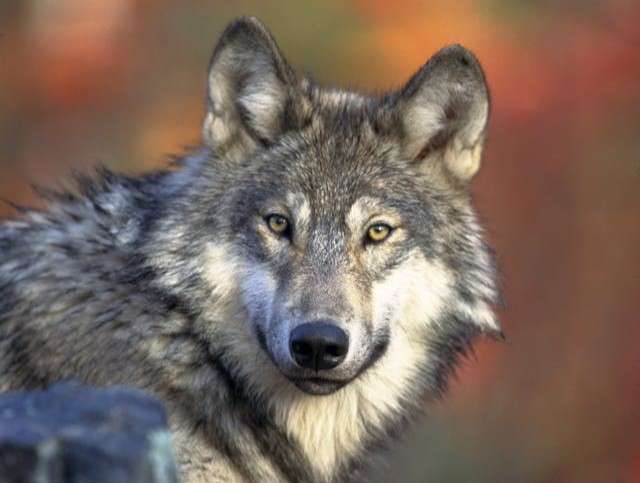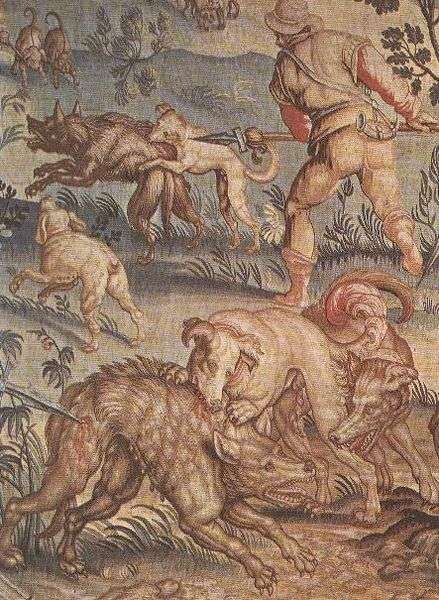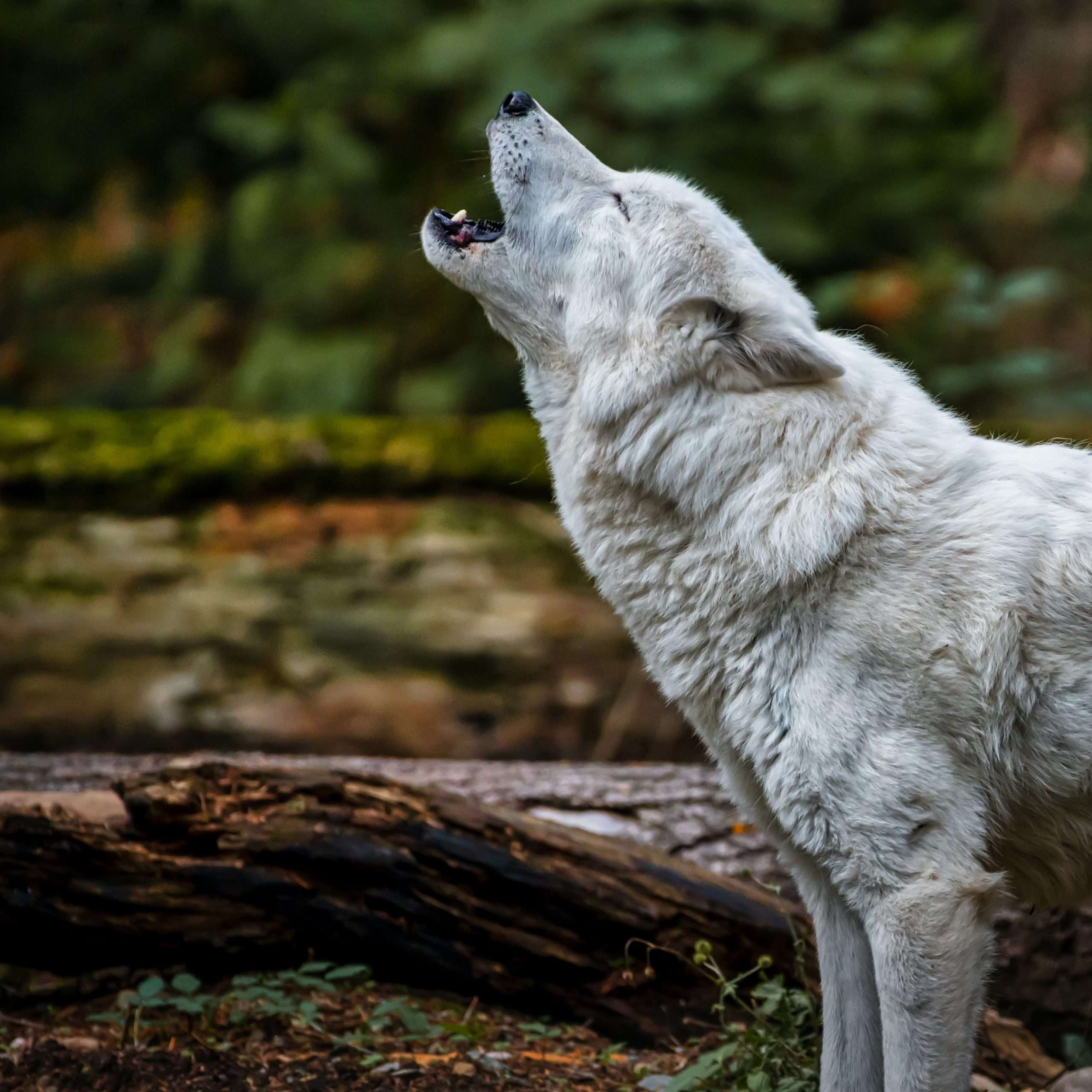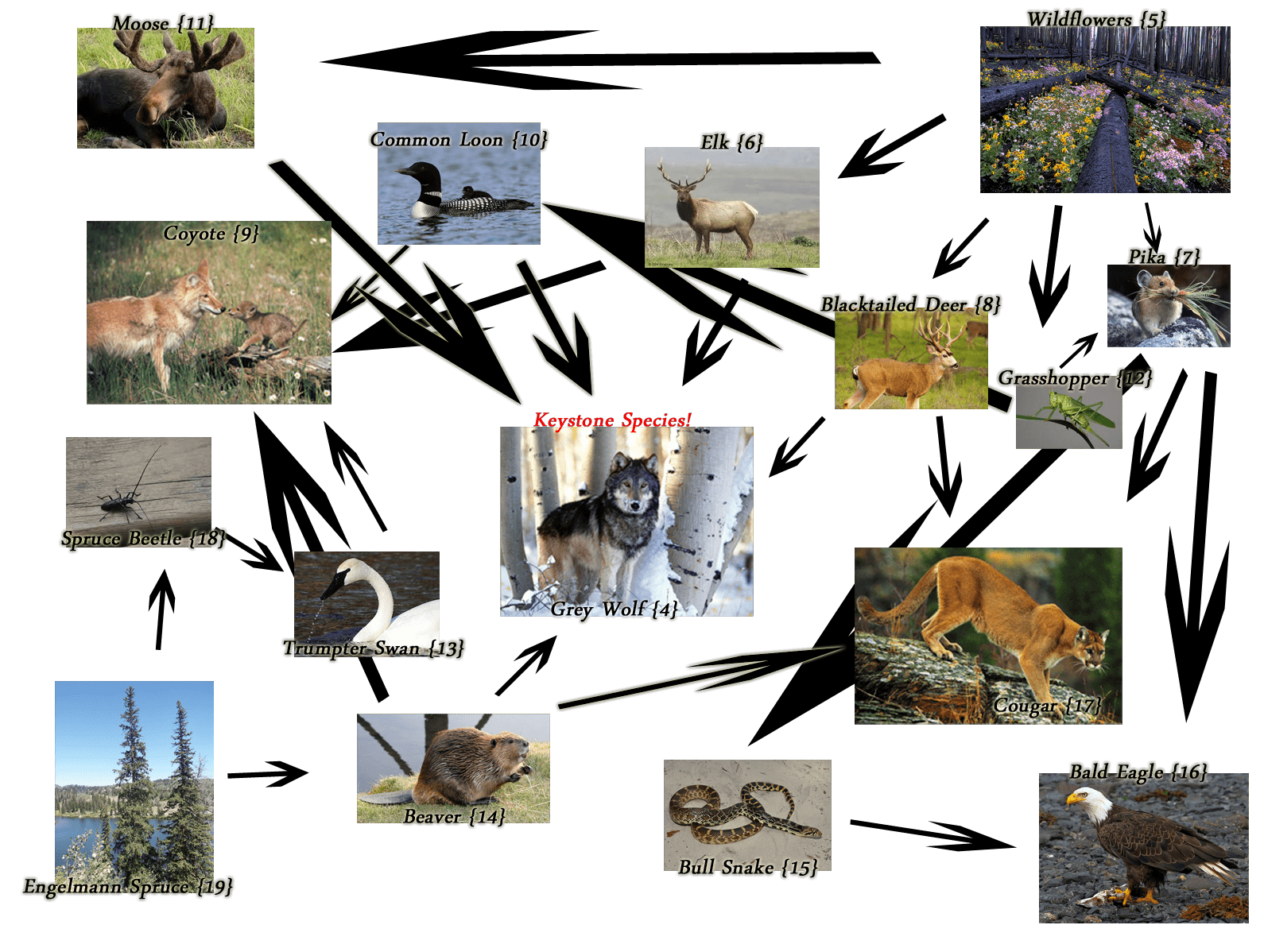THRIVE explores the dynamics of wolf extinction and reintroducing wolves, analysing political, social, and ecological factors. These factors have influenced current wolf populations (Meadows, 2008; Robbins, 2012). Henceforth, THRIVE provides an in-depth examination of the political ecology surrounding these efforts. We discuss historical contexts, indigenous communities, and the implications of wolf reintroduction. We also consider the role of wolves in addressing climate change and enhancing biodiversity.

Source: Pexels
Historical Context:
In the 19th century, westward expansion led to conflict. Settlers, native predator species, and livestock owners clashed. Measures like poisoning were used for predator control. As a result, grey wolves, once present in Yellowstone, were exterminated. By the mid-20th century, they were nearly extinct in the 48 states (Living With Wolves, 2023).
Additionally, the historical context of wolf extinction is intricately linked to social, political, and economic factors (Mech & Boitani, 2003). The expansion of agriculture, livestock production, and land privatisation led to conflicts between wolves and human interests (Paquet & Carbyn, 2003). Economic gains and the prioritisation of human activities often overshadowed the ecological significance of wolves. The dominant political and economic structures of the time disregarded the intricate relationships between species and the role of keystone predators like wolves within ecosystems (Mech & Boitani, 2003).
Understanding the political ecology of wolf extinction
By emphasising interconnectedness and feedback loops in ecological systems, THRIVE advocates for inclusive governance models and diverse knowledge systems. These can contribute to the successful reintroduction of wolves. Understanding the role of wolves as a nature-based solution is crucial for enhancing biodiversity and maintaining ecosystem balance.
Reintroducing wolves is a complex task. Conversely, we understand the decline of wolf populations through feedback loops and interconnectedness (Meadows, 2008). Negative feedback loops, driven by conflicts with humans and livestock losses, intensified the perception of wolves as threats. This led to their extermination (Treves & Karanth, 2003). As conflicts between wolves and humans escalated, negative attitudes towards wolves grew. This reinforced the belief that they were a menace. This negative perception was perpetuated through positive feedback loops (Meadows, 2008). These loops strengthened negative attitudes and justified further eradication efforts.
Positive feedback loops in this context refer to the amplification and reinforcement of beliefs and actions. The more people perceived wolves as threats and supported their eradication, the more efforts were made to eliminate them. Unfortunately, this often involved widespread hunting, trapping, and poisoning campaigns. This resulted in a significant decline in wolf populations (Paquet & Carbyn, 2003).

Source: Wikimedia Commons
The Impact of wolf removal on Ecosystems
The removal of wolves from ecosystems disrupted the balance of predator-prey dynamics, causing cascading effects throughout the food chain (Berger et al., 2001). With the loss of a top predator, prey populations, such as deer and elk, experienced an increase in numbers. This overpopulation led to overgrazing and habitat degradation. It impacted vegetation and other wildlife species dependent on healthy ecosystems.
Wolf extinction and reintroduction are hot topics in ecological studies, so THRIVE explores political ecology. We look at social, political, and ecological factors which have shaped wolf populations (Robbins, 2012). Our objective is to enlighten our readers about the complexities of this issue in a manner that is both informative and engaging. We will explore potential solutions for the survival and successful reintroduction of wolves into their natural habitats.
Extinction and Reintroducing Wolves
Conversely, extinction and reintroduction of species is a complex theme within biodiversity and conservation biology. We examine the nature-based policy implemented in the US. The extinction of wolves was considered to have negatively impacted carbon sequestration in its ecosystem. The reintroduction is presented as a key example of nature-based solutions.
Furthermore, extinction refers to the termination of a species when no living individuals exist. This can transpire due to numerous reasons: habitat destruction, overhunting, disease, climate change, and a combination of these factors (Mech & Boitani, 2003). Conversely, reintroduction involves the deliberate release of a species into its native habitat, from which it had previously disappeared or drastically declined. This action aims to establish a self-sustaining population of the species in the area. This may involve either relocating individuals from other regions, or releasing captive-bred individuals. These processes significantly influence biodiversity, ecosystem balance, and the impacts of human activities on nature. THRIVE highlights the urgency for understanding and addressing extinction and promotes successful reintroductions for the preservation of biodiversity and ecosystem health (Living With Wolves, 2023).

Source: Pexels
Reintroducing Wolves: a controversial matter for ecology and politics
The gray wolf has faced extinction in numerous parts of the world. This is a result of aggressive hunting and habitat loss. Indeed, the reintroduction of this species, particularly in regions like Yellowstone National Park in the US, has brought various complexities to light. These complexities encompass not only ecological but also socio-political aspects (Treves & Karanth, 2003). Despite the ecological benefits associated with their reintroduction, persistent conflicts have arisen between ranchers and farmers. They fear livestock predation predominantly (Treves & Karanth, 2003).
Moreover, the reintroduction of an extinct species is a complex undertaking that can have detrimental consequences for the environment. Even if the species being reintroduced was native to a particular ecosystem, it is crucial to consider that ecosystems change over time (Hayward et al., 2007). Furthermore, the absence of a native species in a certain environment can lead to rapid changes, rendering it unsuitable for reintroduction. While this case highlights a successful example, it is important to acknowledge that there have been instances where reintroductions did not yield positive results (Hayward et al., 2007). Successful reintroductions require dedicated resources and meticulous scientific analysis during the implementation process.
Production and construction of Knowledge
Additionally, the wolf reintroduction program brings forth important questions regarding our perception of nature and the production of knowledge (Robbins, 2012). The impact that wilderness, apex predators, and human policies have on the survival of species compel reevaluation of ecosystem balance. Accordingly, the debate also aids in the production of new knowledge in various fields such as ecology, human-wildlife conflict, and policy-making.
The construction of knowledge played a significant role in shaping the perception and treatment of wolves. Narratives were constructed that portrayed wolves as threats to livestock, human safety, or the idea of a pristine wilderness devoid of human presence. These narratives influenced public opinion, policy decisions, and management practices related to wolf populations (Peglar, 2022).
The production of knowledge about wolves reinforced existing power structures and the established order of political and economic power (Glikman et al., 2012). Dominant narratives favoured groups like livestock owners, and hunters, who saw wolves as adversaries. These narratives were reinforced through media, cultural representations, and scientific discourse. They problematically portrayed wolves as dangerous or expendable (Peglar, 2022).
Acknowledging Diverse Perspectives in Wolf Ecology
Conversely, implications of knowledge construction urge scrutiny of its production. All knowledge is privileged and impacts environmental decisions. Accordingly, it is essential to question whose perspectives are included and whose are excluded in the production of knowledge about wolves and their ecological significance (Robbins, 2012). Fortunately, understanding biases and power dynamics fosters an inclusive understanding of the role wolves play in ecosystems.
Furthermore, political ecology values diverse subjects and identities in environmental struggles, recognising their perspectives and knowledge systems. Indigenous communities enrich our understanding of wolves’ ecological significance with invaluable insights and perspectives. (Sutherland & Chakrabarti 2022).
Indigenous Perspectives and Ecosystem Balance
Indigenous communities have historically maintained harmonious relationships with wolves. They recognised their ecological role (Berkes, 2018). For example, in certain Native American cultures, wolves are considered sacred animals. They integrate into spiritual and cultural practices. These communities understand the ecological interdependence between wolves and other species. They also understand the importance of maintaining balanced predator-prey relationships (Fox & Bekoff, 2011).
The historical context of wolf extinction and reintroduction is influenced by broader socio-political factors. These include colonial legacies and inequalities. Furthermore, indigenous knowledge systems often emphasise the interconnectedness of all living beings and recognise the intrinsic value of biodiversity (Sutherland & Chakrabarti 2022). They have developed traditional ecological knowledge (TEK) based on generations of observation and experience. TEK embraces holistic ecosystem perspectives, emphasising ecological balance, and recognising wolves as keystone species (Fox & Bekoff, 2011).
Reintroducing Wolves: Incorporating Indigenous Knowledge
Including indigenous perspectives in restoration efforts is beneficial. It leads to a more comprehensive understanding of environmental subjects and identities. Indigenous communities provide valuable insights. They understand ecosystem dynamics, conservation practices, and sustainable resource management. Their involvement promotes cultural diversity, social justice, and, therefore, the preservation of traditional knowledge systems (Fox & Bekoff, 2011).
Additionally, the inclusion of indigenous communities in decision-making processes ensures that their voices are heard. It is essential that their rights are respected. Upholding indigenous rights and sovereignty is paramount to fostering an equitable wolf reintroduction and inclusive environmental governance. Additionally, by incorporating diverse perspectives, including those of indigenous communities, restoration efforts can be guided by a more holistic understanding of the environmental subjects and identities involved (Fox & Bekoff, 2011). This inclusive approach enhances our ability to develop effective and sustainable conservation strategies. These align with cultural values, promote social justice, and foster resilient ecosystems (Fox & Bekoff, 2011). Acknowledging diverse knowledge systems enables the integration of traditional and scientific wisdom, fostering comprehensive, informed decision-making.

Source: Wallpaper Flare
Ecosystem Dynamics and the Role of Wolves in Climate Change Mitigation
With growing concerns about environmental issues and the impact of climate change, society has witnessed a shift in approaches to wildlife management and ecosystem restoration (Chapron et al., 2014). During the 1960s and 1970s, a paradigm shift occurred. It recognised the importance of ecosystem dynamics and the need for self-regulating populations (Chapron et al., 2014). This shift in thinking led to a deeper understanding of the vital role wolves play in maintaining ecological balance. The enactment of the Endangered Species Act further emphasised the need to restore species that had been eliminated, including wolves (Endangered Species Act, 1973).
The application of feedback loop systems thinking in restoration efforts shines through in the reintroduction of grey wolves in Yellowstone National Park. The reintroduction program carefully considered various feedback loops, including predator-prey dynamics, trophic cascades, and biodiversity effects. For example, research conducted by ecologists William Ripple and Robert Beschta at Oregon State University found that the presence of wolves in Yellowstone National Park resulted in a reduction of elk populations. This decrease in elk numbers led to a decrease in browsing pressure on young aspen and willow trees. This is, fortunately, allowing these tree species to recover and thrive (Ripple & Beschta, 2012).
The Implications of reintroducing wolves for Ecosystem Restoration and Climate Change Adaptation
The regrowth of the trees prompted by the reintroduction, provided habitat for various bird species and beavers. Beavers, in turn, create wetland habitats that support a diverse array of species, including fish, amphibians, birds, and insects. Moreover, studies have shown that the presence of wolves affects smaller predator populations, such as coyotes, leading to changes in their behaviour and spatial distribution. This, in turn, benefits smaller mammals, birds, and plant communities that were previously suppressed by higher densities of mesopredators (Chapron et al., 2014). By reintroducing wolves, positive feedback loops are initiated, leading to the restoration of the ecosystem and the enhancement of biodiversity (Meadows, 2008). Wolves played a crucial role in controlling herbivore populations, reducing overgrazing, and allowing vegetation to regenerate. As a result, smaller mammals, birds, and the overall resilience of the ecosystem benefited (Chapron et al., 2014).
Implications for Climate Change Mitigation
Indeed, these restoration efforts and the presence of wolves have significant implications for addressing climate change. Wolves contribute to climate change solutions by promoting healthier ecosystem efforts. Their predatory role helps regulate herbivore populations, preventing excessive grazing and the degradation of vegetation, which acts as a carbon sink. Additionally, the restoration of native species, such as wolves, contributes to the preservation of biodiversity and the maintenance of functioning ecosystems (Chapron et al., 2014). These ecosystems, in turn, play a critical role in climate change adaptation and mitigation.
Understanding the interconnectedness of every species is vital. Equally important is grasping the role of feedback loops in ecosystem dynamics (Meadows, 2008). These insights pave the way for more effective wolf reintroduction and ecosystem restoration strategies. The reintroduction of wolves has shown potential for creating positive feedback loops (Lorimer et al., 2015) These loops can restore balance and boost the resilience of ecosystems. Moreover, wolf reintroduction plays a part in mitigating climate change impacts (Chapron et al., 2014). This action underscores the broader importance of restoring keystone species and maintaining healthy ecological relationships. Furthermore, their role in mitigating the impacts of climate change highlights the broader significance of restoring keystone species and maintaining healthy ecological relationships.
Political ecology perspectives prompt us to critically examine environmental governance and its implications for wolf reintroduction. It emphasises the risks and potential negative consequences associated with conservation efforts, displacing communities and denying them control over resources. Conversely, incorporating inclusive governance models that prioritise social justice, local knowledge, and community involvement can ensure more equitable and sustainable conservation practices.
moving forward
As we move forward, it is critical to approach the issue of wolf reintroduction with balanced consideration. We must consider ecological necessity, economic implications, and social acceptance. Strategies need to be based on robust scientific research, community engagement, and collaborative decision-making. This ensures both the survival of the wolf and the well-being of communities sharing the landscape with these creatures.
We have comprehensively analysed the political ecology of wolf extinction and reintroduction (Meadows, 2008; Robbins, 2012). Through the exploration of feedback loops, interconnectedness, nonlinear relationships, resilience, and emergent system properties, we have gained a deeper understanding of the complex dynamics that influenced wolf populations and subsequent restoration efforts.
The historical context highlights the destructive feedback loops that led to the decimation of wolf populations, driven by conflicts with humans and the disruption of predator-prey dynamics (Treves & Karanth, 2003). However, the paradigm shift in wildlife management and the recognition of wolves as keystone species introduces positive feedback loops, leading to restoration efforts and the acknowledgement of their ecological importance (Berger et al., 2001).
reintroducing wolves: Implications for Climate Change
Furthermore, our analysis reveals the socio-political factors that influenced the treatment of wolves. Additionally, this includes the production of nature, knowledge construction, environmental justice, and uneven ecological exchange (Glikman et al., 2012.; Berkes, 2018). Incorporating diverse perspectives, particularly from indigenous communities, and reimagining environmental governance through inclusive models can address environmental injustices and promote sustainable coexistence.
The reintroduction of wolves holds significant implications for climate change solutions. The role wolves play in regulating herbivore populations and maintaining ecosystem health contributes to climate change mitigation. It prevents excessive grazing and promotes vegetation growth as a carbon sink. Additionally, the restoration of biodiversity and ecosystem resilience supports climate change adaptation efforts (Chapron et al., 2014).
In short, this comprehensive systems thinking analysis underscores the importance of understanding the interconnectedness and feedback loops that shape ecological systems (Meadows, 2008; Robbins, 2012). Markedly, by recognising the intricate relationships between humans, wolves, and the broader ecosystem, we can develop effective strategies for wolf reintroduction and ecosystem restoration. Embracing inclusive governance models and incorporating diverse knowledge systems will foster a harmonious coexistence between humans and nature, promoting the long-term sustainability and resilience of our ecosystems in the face of environmental challenges, including climate change (Fox & Bekoff, 2011).

Source: PNGWING
achieving the United Nations Sustainability Development Goals (SDGs) and how they link to reintroducing wolves
We link the journey of the grey wolf, from local extinction to successful reintroduction, as intricately tied to the United Nations Sustainable Development Goal (SDG) 15: Life on Land. This goal advocates for sustainable management of forests and terrestrial ecosystems, reversal of land degradation, and halting biodiversity loss. The reintroduction of the gray wolf exemplifies this objective by demonstrating how thoughtful reintroduction programs can restore ecosystem balance and enhance biodiversity. Moreover, the process of trophic cascades initiated by the wolf indirectly aids in boosting the carbon sequestration capacity of these ecosystems, contributing to broader climate action goals as outlined in SDG 13. Thus, the story of the gray wolf offers a compelling example of the potential positive impacts of proactive conservation measures in achieving the United Nations’ Sustainable Development Goals.
A Thrivable Framework
At THRIVE, we uphold the view that a sustainable world underpins sustainable business. The reintroduction of the gray wolf brings this notion to life, showcasing how our interventions can profoundly influence biodiversity and ecosystem health. This case underscores the power of comprehensive strategies to contribute to multiple SDGs, notably SDG 13: Climate Action and SDG 15: Life on Land. If this topic interests you, we invite you to listen to our podcast episode on this topic.
Thereupon, THRIVE strives to shed light on such compelling narratives, to inspire actions that exceed mere sustainability. Our research, education, and advocacy work offer valuable insights into this process, and we extend an invitation for you to join us in this endeavour. Engage with our informative blog posts and podcast series, and participate in our live webinars to delve deeper into the world of sustainability. Together, we can chart the course towards a more thrivable future.























